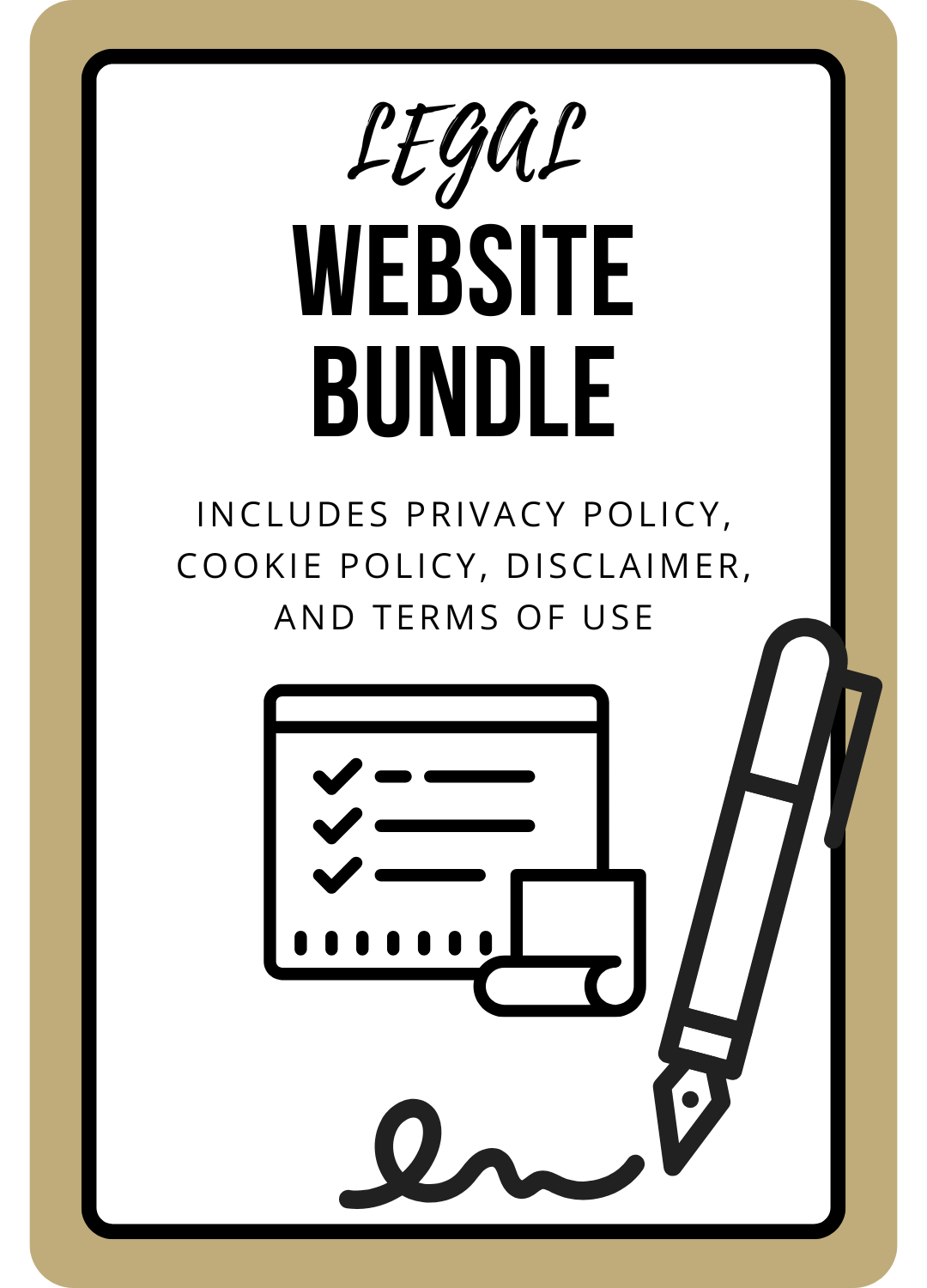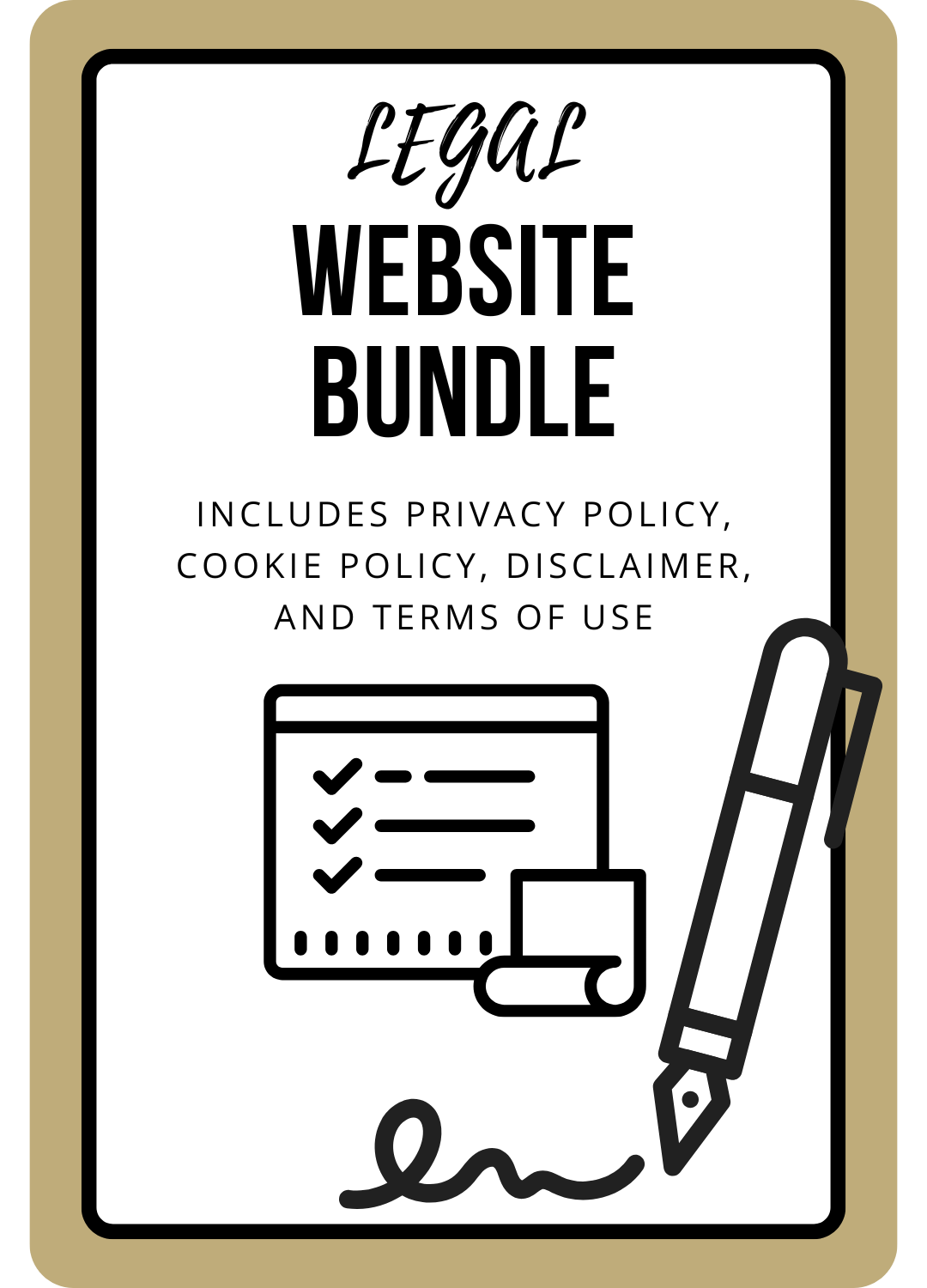7 Key Essentials Your Blog Disclaimer Is Likely Missing (and How to Fix It)
Think your blog disclaimer has you covered? A generic one could leave you exposed to serious risks.
Most bloggers copy a blog disclaimer from someone else’s site or use a generic AI version — but that doesn’t mean it actually protects you. One missing clause can open the door to complaints, refund demands, or even legal claims if readers misinterpret your content.
As a lawyer who reviews disclaimers every day, I’ve seen the same pattern over and over again: a blog disclaimer that looks legit but leaves massive gaps. From missing niche-specific protections to outdated or incomplete affiliate disclosures, most website disclaimer examples fail to deliver what bloggers think they do.
In this post, you’ll learn the 7 key essentials your blog disclaimer is likely missing — and how to fix each one so your content, income, and credibility are properly protected with a proper blog disclaimer template.
🛡️ Get the full, lawyer-drafted Website & Blog Disclaimer Template inside the Legal Website Bundle — and make sure you’re covered for every niche.
This post is all about the 7 key essentials your blog disclaimer is likely missing — and how to fix it before it’s too late.
Best Blog Disclaimer
Every Crucial Blog Disclaimer Example of What You Might Be Missing | 7 Key Essentials
1. A Proper “No (Professional) Advice” Clause — You’re Not Their Advisor
If you share any tips, tutorials, or personal experiences, readers can easily mistake them for professional guidance. Without a solid no advice clause in your blog disclaimer, you could be blamed when their results don’t match yours.
⚠️ Here’s what could go wrong:
A reader follows your tax-saving tips, gets fined, and accuses you of giving “financial advice.”
Someone copies your skincare routine, has a reaction, and demands compensation.
A reader treats your productivity system like expert coaching — and claims you misled them when it doesn’t work.
🧾 Here’s what your blog disclaimer should include:
General information only: State clearly that your content is for informational and educational purposes.
Not professional advice: Clarify that it doesn’t replace expert guidance in financial, legal, medical, or other fields.
Reader responsibility: Emphasize that readers act on your content at their own risk and discretion.
Encouragement to seek professionals: Advise readers to consult a qualified expert before acting on any information.
With these key elements in your blog disclaimer, you make it clear your content informs — it doesn’t instruct. As a blogger, you need a legal disclaimer template that protects you from claims of giving unqualified advice.
👉 This blog disclaimer is included in the Website & Blog Disclaimer Template inside the Legal Website Bundle — simply personalize it for your niche and stay protected.
2. An Errors & Accuracy Disclaimer — Because Mistakes Happen
Even the most careful bloggers make mistakes — a typo here, an outdated link there, or a statistic that’s no longer accurate. Without an errors and accuracy disclaimer, readers could accuse you of spreading misinformation or publishing “false” content.
⚠️ Here’s what could go wrong with a deficient blog disclaimer:
A reader follows an outdated guide and claims you cost them time or money.
Someone spots a typo and calls your credibility into question.
A blog post links to a source that’s been deleted or updated with conflicting information.
🧾 Here’s what your blog disclaimer should include:
Informational purpose only: Clarify that your content is for general information, not guaranteed accuracy.
No warranty of completeness: State that you don’t promise every post is correct, current, or exhaustive.
No liability for reliance: Emphasize that readers use your content at their own discretion and risk.
Right to update or change content: Reserve the right to modify or remove information without notice.
By including these points in your blog disclaimer, you shift the responsibility from yourself to the reader whilemaintaining transparency and professionalism.
👉 Already included in the Website & Blog Disclaimer Template inside the Legal Website Bundle — with an easy-to-follow disclaimer page design you and your readers will actually understand.
3. Third-Party Content & Links Clause — Don’t Own Their Mistakes
If your blog includes guest posts, quotes, or external links, you need a third-party content disclaimer. Without it, you could be blamed for someone else’s opinions, errors, or broken resources — even if you didn’t write or control them.
⚠️ Here’s what could go wrong without the proper blogger disclaimer:
A guest writer includes inaccurate information, and readers accuse you of spreading misinformation.
You link to an article that later changes its content or goes offline entirely.
A third-party resource you mentioned updates its products or policies, and readers hold you accountable for the outdated info.
🧾 Here’s what your blog disclaimer should include:
No control over third-party content: Clarify that you don’t own or manage external websites or guest content.
No responsibility for accuracy: State that you aren’t liable for errors, omissions, or changes in third-party material.
Reader assumes risk: Emphasize that visiting or using external links is done at the reader’s own discretion.
Independent relationships: Make it clear that any transaction between the reader and a third party is solely between them.
By using this blog disclaimer example, you’ll be protected from being held accountable for something you didn’t write, endorse, or control — a must-have for bloggers who collaborate or share external resources.
👉 Already built into the Website & Blog Disclaimer Template inside the Legal Website Bundle.
4. Affiliate & Sponsored Content Disclosure — Stay Transparent and Compliant
If you earn commissions through affiliate links, brand collaborations, or sponsored content, you’re legally required to disclose those relationships. But most disclaimers for blogs sold online do not include those disclosures for bloggers.
⚠️ Here’s what could go wrong if you don’t have these disclosures in your blog disclaimer:
The FTC fines you for failing to disclose a paid relationship.
A reader accuses you of promoting a product just for commission.
A brand partnership ends abruptly because your disclosure wasn’t clear or visible enough.
🧾 Here’s what your blog disclaimer should include:
Affiliate/sponsorship relationship disclosure: Clearly state when links are affiliate-based or when compensation is received.
No extra cost to readers: Clarify that commissions don’t affect product prices or your opinions.
Honest recommendations: Emphasize that you only promote products or services you genuinely believe in.
Pro tip: Make sure your disclosure appears before or near the affiliate link — not buried at the bottom. My Website & Blog Disclaimer Template includes disclosure statements you can include in your blog posts, YouTube videos, and social media captions!
👉 Already pre-written in the Website & Blog Disclaimer Template inside the Legal Website Bundle — so your blog remains compliant with advertising laws while reinforcing your integrity with readers.
Want a blog disclaimer that actually protects you?
Copying a blog disclaimer example from someone else’s site or using a free disclaimer generator? Chances are it’s missing the clauses that really matter — like affiliate disclosures, third-party content protections, and niche-specific disclaimers that match your blog.
🧾 The Legal Website Bundle already includes:
A Website & Blog Disclaimer Template with every essential clause pre-written (including niche-specific options)
A Privacy Policy Template that’s CCPA and GDPR-ready and globally compliant
Website Terms of Use to define how visitors can use your content and protect your IP
👉 Get the Legal Website Bundle today and make your blog safe, credible, and compliant with a terms of use template, blog disclaimer and privacy policy!
5. Views & Opinions Disclaimer — Protect Yourself When You Share Your Perspective
If your blog includes commentary, analysis, or opinion-based content, this blog disclaimer is a must. Without it, readers may assume your posts represent objective facts — or worse, accuse you of spreading misinformation when they disagree with you.
⚠️ Here’s what could go wrong if you use a generic legal disclaimer template that doesn’t include this blog disclaimer:
Someone feels offended or misrepresented by your take on a sensitive topic.
A third party claims your blog post damaged their reputation or portrayed them unfairly.
🧾 Here’s what your blog disclaimer should include:
Opinions, not facts: Clarify that your posts express personal perspectives and experiences, not verified information.
No endorsement of others’ views: State that third-party opinions or guest content don’t reflect your stance — and vice versa.
Respectful disagreement: Encourage open discussion while reminding readers that opinions will vary.
No liability for reactions: Disclaim responsibility if readers are offended, distressed, or disagree with your content.
This clause protects your freedom to express opinions while drawing a clear line between your personal perspective and objective reporting — crucial for lifestyle, commentary, and review blogs.
👉 Already included in the Website & Blog Disclaimer Template inside the Legal Website Bundle — so you can share your opinions freely without risking your credibility or reputation.
6. A No-Influencing Disclaimer — Especially for Lifestyle & Mindset Bloggers
If your blog covers personal development, mindset, or lifestyle topics, readers might assume your content is designed to persuade or influence them. A no-influencing disclaimer clarifies that your posts are meant to inform and inspire — not to pressure, manipulate, or guide anyone’s personal beliefs or decisions.
⚠️ But the average blog disclaimer template doesn’t include this blog disclaimer, and here’s what could go wrong:
A reader claims your advice made them change jobs, diets, or relationships — and they now regret it.
Someone accuses you of pushing your personal views, politics, or spirituality onto others.
A reader interprets your motivational post as therapy or professional guidance.
🧾 Here’s what your blog disclaimer should include:
No intent to influence: Explain that your content isn’t meant to alter readers’ opinions, beliefs, or values.
Reader autonomy: Emphasize that readers are responsible for their own choices and actions.
Not a substitute for professional support: Clarify that your content doesn’t replace therapy, coaching, or counseling.
No liability for decisions: Disclaim responsibility for how readers interpret or act on your content.
This blog disclaimer is especially important for mindset, development, lifestyle, and spiritual blogs — where personal opinions can easily be mistaken for professional or moral guidance. But it really applies to any opinions and views you may share online.
👉 Already pre-written in the Website & Blog Disclaimer Template inside the Legal Website Bundle — to protect your freedom of expression.
7. Niche-Specific Disclaimers — The Protection Most Bloggers Forget
Most bloggers use a generic blog disclaimer for everything — but not every blog carries the same types of risks. A food blogger faces very different liabilities than a finance, fitness, or lifestyle blogger.
That’s why niche-specific blog disclaimers are essential: they fill the exact legal gaps a generic blog disclaimer can’t.
⚠️ Here’s what could go wrong:
A fitness blogger forgets to include a medical disclaimer and gets blamed for a reader’s injury.
A food blogger skips allergy warnings, and a reader has an allergic reaction.
A business blogger gives tax tips and gets accused of offering unqualified financial advice.
🧾 Here’s what your blog disclaimer should include:
Tailored protections: Add niche disclaimers for your specific content type (health, finance, food, DIY, affiliate, etc.).
Explicit boundaries: Clarify what your content does and doesn’t cover to prevent misinterpretation.
Adaptable language: Include optional clauses you can toggle on or off as your blog evolves.
Alignment with your niche risks: Make sure every example and clause fits the type of content you actually share.
If you’re unsure where to start, you can check out my full guide — 15 Niche-Specific Blog Disclaimers Every Blogger Needs to Stay Safe, Credible & Compliant — to see exactly which blog disclaimers apply to your niche.
👉 The Website & Blog Disclaimer Template inside the Legal Website Bundle already includes every niche-specific clause — so you can build the right protection without guessing what you need.
The BEST Website & Blog Disclaimer Template Customizable to Your Niche
Most bloggers assume their blog disclaimer page protects them — until something goes wrong. Whether it’s a reader misunderstanding your advice, a broken affiliate link, or a guest post that backfires, one missing clause can turn into a serious problem.
But you don’t need to write your own or hope that a copied version will cover you. The Website & Blog Disclaimer Template inside the Legal Website Bundle already includes every protection you just learned about — and more.
🧾 Here’s what you’ll get inside:
A lawyer-drafted Website & Blog Disclaimer Template with all 7 key essentials (plus niche-specific disclaimers)
A GDPR-ready Privacy Policy Template to protect your readers and meet global data standards
Website Terms of Use that define how visitors can use your content and safeguard your IP
Instant access and lifetime updates — so you always stay compliant
Don’t wait until someone calls you out for missing blog disclaimers or misleading content. Protect your blog, your business, and your credibility before problems arise.
🛡️ Get the Legal Website Bundle and make sure your blog disclaimer actually does what it’s supposed to — protect you.
This post was all about the 7 key essentials your blog disclaimer is probably missing — and how to fix them before it’s too late.
Other posts you may like:






